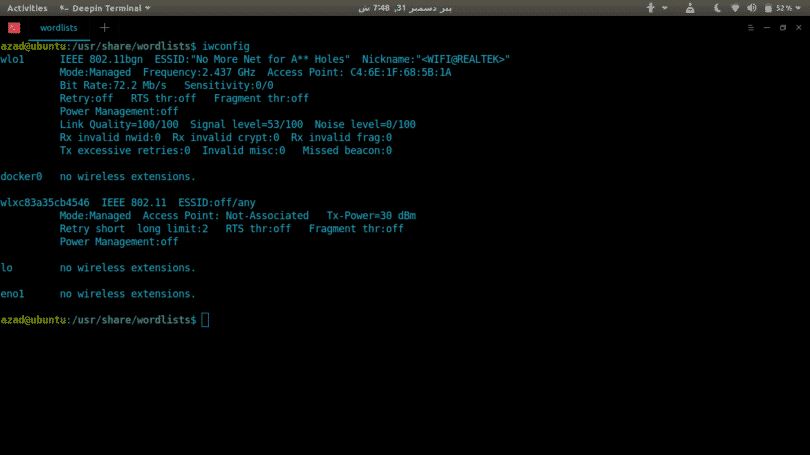
Crunch will allow us to configure the dictionary as we want, and it will export it to a text file for later use in programs such as Aircrack-ng among others.

This way, we won’t have to use dictionaries that are outside of these parameters.

If we know or intuit that the WPA password of a target has, for example, 10 characters and that it only uses uppercase and lowercase letters, we can create a dictionary that has all the combinations and permutations of uppercase and lowercase letters. We must remember that WiFi networks with WPA have between 8 and 63 characters, so “trying†these words does not make any sense, since we will not be able to “hit†with the WiFi password.Ĭurrently there are very powerful and configurable programs that allow us to create a dictionary on demand, such as Crunch. Particularly the one on hacking WEP using aircrack-ng and hacking WPA2-PSK passwords using coWPAtty.When we download a dictionary of keys, if we want to crack WiFi wireless networks, we must make sure that we do not have words or a combination of words and numbers below 8 characters or above 63 characters. If you haven’t seen the other Wi-Fi hacking guides yet, check them out here. Keep coming back, as I promise more advanced methods of hacking wireless in future tutorials. STAY TUNED FOR MORE WIRELESS HACKING GUIDES CrackStation’s Password Cracking Dictionary.Try the default password file first and if it’s not successful, advance to a larger, more complete password file such as one of these. When the password is found, it’ll appear on your screen. That works out to about 1.8 million passwords per hour. On my dual core 2.8 gig Intel processor, it’s capable of testing a little over 500 passwords per second. Depending upon the length of your password list, you could be waiting a few minutes to a few days.

This process can be relatively slow and tedious.


 0 kommentar(er)
0 kommentar(er)
